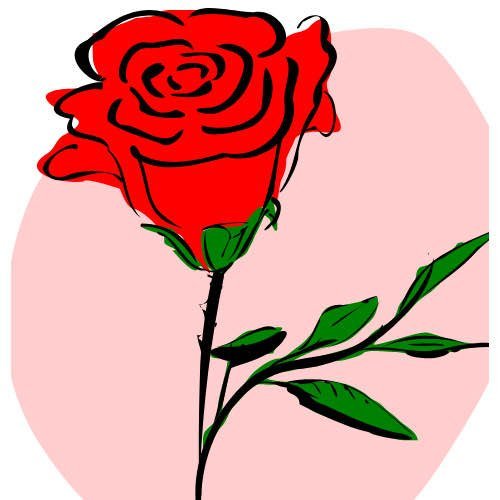


Dried chrysanthemums hold significant cultural and symbolic meaning in many parts of the world, particularly in East Asia. These flowers, which can be preserved and enjoyed long after their initial bloom, are more than just decorative elements; they carry deep-rooted meanings of longevity, prosperity, and well-being. This article delves into the historical and cultural importance of dried chrysanthemums, their role in various traditions, and how they have become a lasting symbol of a prosperous and long life.
The chrysanthemum, native to East Asia, particularly China and Japan, has been cultivated for over 2,500 years. The flower was initially grown for its medicinal properties and later became a significant part of the ornamental culture. In ancient China, chrysanthemums were revered for their beauty and healing powers, often associated with the autumn season and the concept of resilience, as they bloom even as other plants wither.
The flower was eventually introduced to Japan in the 8th century, where it was quickly adopted as a symbol of the Japanese imperial family. The chrysanthemum became so significant that it was incorporated into the imperial seal, and the flower is celebrated annually in Japan during the "Chrysanthemum Festival," known as "Kiku no Sekku."

In Chinese culture, chrysanthemums are one of the "Four Gentlemen" in Chinese art, representing the autumn season and the virtue of fortitude. The flower is often associated with the elderly, reflecting its symbolic connection to longevity. In traditional Chinese medicine, chrysanthemums are used to promote long life and health, making them a popular motif in Chinese art, poetry, and decoration.
In Japan, the chrysanthemum is a symbol of the imperial family and represents longevity and rejuvenation. The flower's many petals are said to symbolize perfection and the unfolding of life. The Japanese believe that chrysanthemums, when consumed as tea or used in rituals, can bestow good health and a long life. This belief is deeply rooted in the annual "Kiku Matsuri" (Chrysanthemum Festival), where the flowers are displayed in various artistic forms to celebrate their beauty and symbolic meanings.
The practice of drying chrysanthemums allows for the preservation of these symbolic meanings long after the flowers have bloomed. Dried chrysanthemums retain their shape and color, making them a popular choice for decorative purposes in homes, particularly in places where the symbolism of longevity and prosperity is valued.
Dried flowers have been used in various cultural rituals, such as ancestor worship, where they are offered as a symbol of respect and a wish for long life and prosperity for the family. In Feng Shui, dried chrysanthemums are believed to attract positive energy and are often placed in areas of the home associated with health and well-being.
Beyond their decorative uses, dried chrysanthemums play a significant role in traditional medicine. In Chinese herbal medicine, dried chrysanthemum flowers are used to make "ju hua" tea, which is believed to have cooling properties that help reduce inflammation, relieve headaches, and improve vision. The tea is also consumed to promote longevity and overall wellness.
The medicinal use of dried chrysanthemums further cements their association with long life and health, as they are a natural remedy that has been passed down through generations. The continued use of these dried flowers in modern herbal medicine highlights their enduring importance in promoting well-being.
In various East Asian cultures, chrysanthemums are integral to celebrations and rituals, particularly those associated with longevity and prosperity. During the Chinese Double Ninth Festival, also known as "Chongyang Festival," people drink chrysanthemum wine and wear sprigs of the flower to ward off evil spirits and pray for a long life.
In Japan, the Chrysanthemum Festival is a time to appreciate the beauty of the flower and to reflect on the virtues it represents. Dried chrysanthemums are often used in ikebana, the Japanese art of flower arrangement, where they symbolize perseverance and the quiet strength needed to achieve longevity.

Today, dried chrysanthemums are increasingly popular in modern decor, where they are used to create arrangements that are both aesthetically pleasing and symbolically rich. Their longevity as a dried flower makes them an ideal choice for those who wish to incorporate traditional symbolism into contemporary spaces.
Dried chrysanthemums are often found in minimalist and modern designs, where their subtle colors and intricate petal structure add texture and depth to interiors. They are also used in wedding decor, where they symbolize a long and prosperous marriage, and in businesses, where they are believed to bring success and good fortune.
The enduring popularity of chrysanthemums, both fresh and dried, speaks to their powerful symbolism and versatility. As a symbol of longevity and prosperity, dried chrysanthemums continue to hold a special place in cultural traditions, medicine, and modern decor. Whether displayed in a home, used in rituals, or consumed as tea, dried chrysanthemums offer more than just beauty—they carry the promise of a long, healthy, and prosperous life.
By understanding the rich history and cultural significance of dried chrysanthemums, we can appreciate these flowers not only for their aesthetic appeal but also for the deeper meanings they embody. As we continue to incorporate these timeless symbols into our lives, dried chrysanthemums remind us of the importance of longevity, health, and prosperity in all that we do.